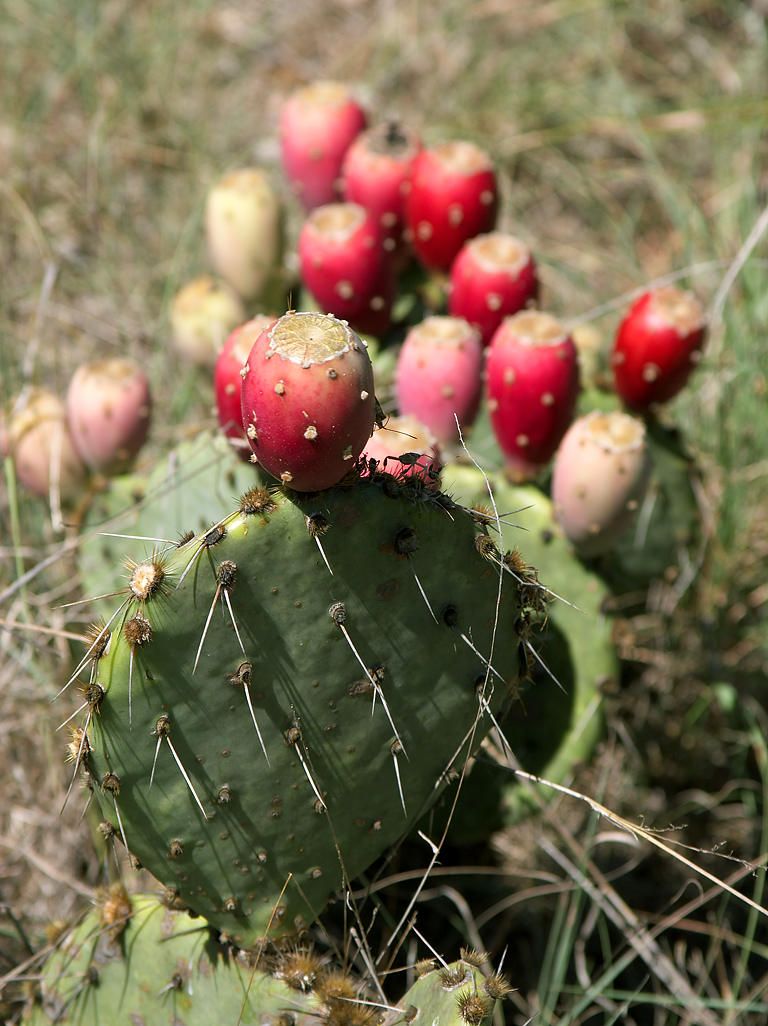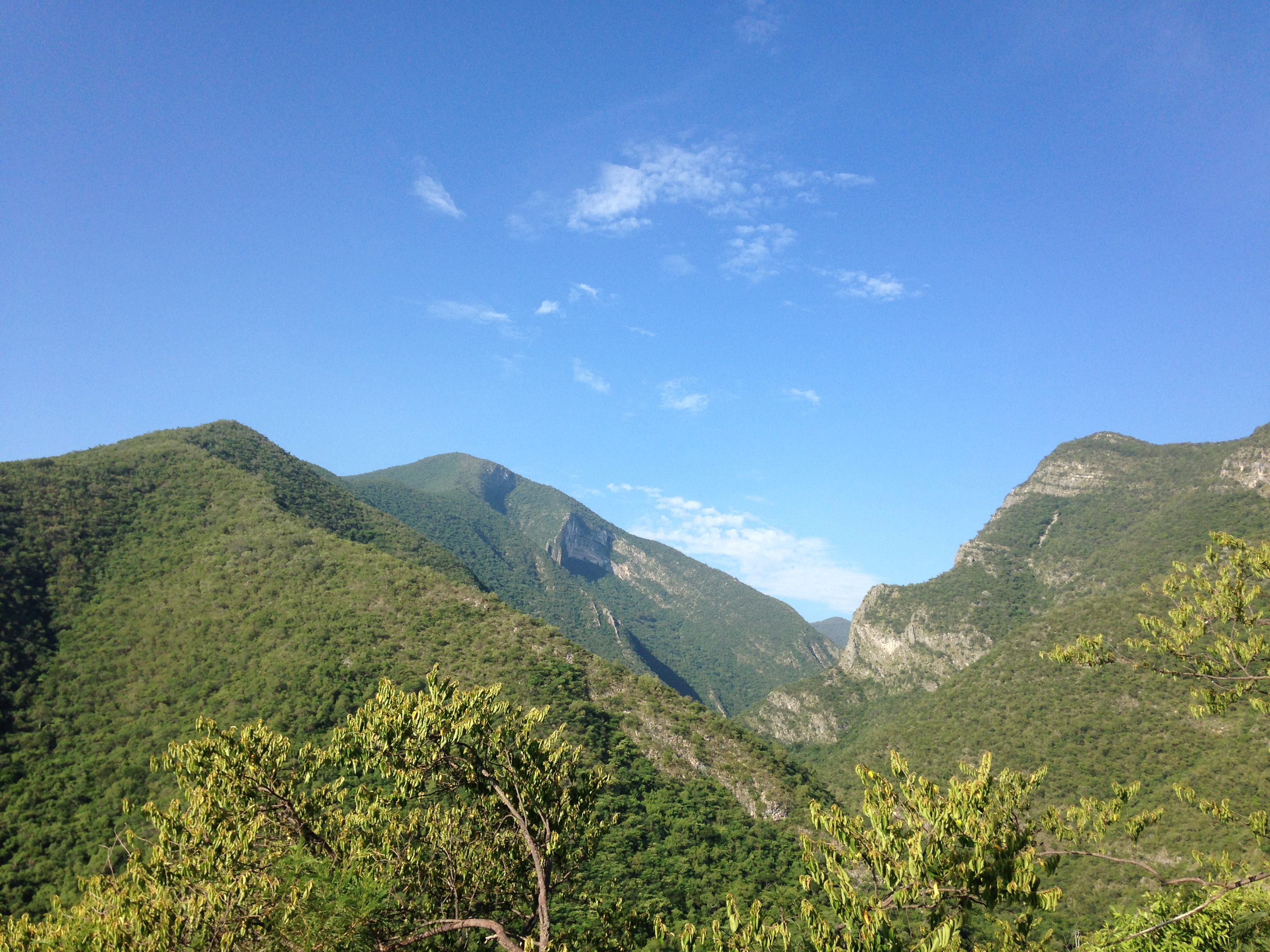|
Opuntia Macrorhiza
''Opuntia macrorhiza,'' also called plains pricklypear or prairie pricklypear or western pricklypear, is a common and widespread species of cactus. Description ''O. macrorhiza'' is one of the shorter species of the genus, rarely over 30 cm (1 foot) tall, spreading horizontally and forming wide clumps. Flowers are showy and bright yellow, often with red markings near the base of the petals. Fruits are narrow, red, juicy and edible. Distribution and Habitat The species prefers well-drained, sandy or gravelly soils, mostly in grassland areas. It is found throughout the Great Plains of the United States, from Texas to Minnesota, and west into the Rocky Mountain states to New Mexico, Utah, and perhaps Idaho, with sporadic populations in the Mississippi Valley, Mississippi and Ohio Valleys. It is also reported from northern Mexico in the states of Chihuahua (state), Chihuahua, Sonora, Coahuila, Nuevo León, Durango, Tamaulipas, and San Luís Potosí., [...More Info...] [...Related Items...] OR: [Wikipedia] [Google] [Baidu] |
Cactus
A cactus (: cacti, cactuses, or less commonly, cactus) is a member of the plant family Cactaceae (), a family of the order Caryophyllales comprising about 127 genera with some 1,750 known species. The word ''cactus'' derives, through Latin, from the Ancient Greek word (''káktos''), a name originally used by Theophrastus for a spiny plant whose identity is now not certain. Cacti occur in a wide range of shapes and sizes. They are native to the Americas, ranging from Patagonia in the south to parts of western Canada in the north, with the exception of ''Rhipsalis baccifera'', which is also found in Africa and Sri Lanka. Cacti are adapted to live in very dry environments, including the Atacama Desert, one of the driest places on Earth. Because of this, cacti show many adaptations to conserve water. For example, almost all cacti are succulents, meaning they have thickened, fleshy parts adapted to store water. Unlike many other succulents, the stem is the only part of most cacti ... [...More Info...] [...Related Items...] OR: [Wikipedia] [Google] [Baidu] |
Nuevo León
Nuevo León, officially the Free and Sovereign State of Nuevo León, is a Administrative divisions of Mexico, state in northeastern Mexico. The state borders the Mexican states of Tamaulipas, Coahuila, Zacatecas, and San Luis Potosí, San Luis Potosi, and has an extremely narrow international border with the U.S. state of Texas. Covering 64,156 square kilometers (24,771 square miles) and with a population of 5.78 million people, Nuevo León is the thirteenth-largest Political divisions of mexico, federal entity by List of Mexican states by area, area and the seventh-most List of Mexican states by population, populous as of 2020. Monterrey, the state's capital, is the most populous city in Nuevo León and the List of cities in Mexico, ninth-largest in Mexico. Monterrey is part of the Monterrey metropolitan area, the Metropolitan areas of Mexico#List of metropolitan areas in Mexico by population, second-largest metropolitan area in the country with an estimated population of 5.3 ... [...More Info...] [...Related Items...] OR: [Wikipedia] [Google] [Baidu] |
Desert Fruits
A desert is a landscape where little precipitation occurs and, consequently, living conditions create unique biomes and ecosystems. The lack of vegetation exposes the unprotected surface of the ground to denudation. About one-third of the land surface of the Earth is arid or Semi-arid climate, semi-arid. This includes much of the Polar regions of Earth, polar regions, where little precipitation occurs, and which are sometimes called polar deserts or "cold deserts". Deserts can be classified by the amount of precipitation that falls, by the temperature that prevails, by the causes of desertification or by their geographical location. Deserts are formed by weathering processes as large variations in temperature between day and night strain the Rock (geology), rocks, which consequently break in pieces. Although rain seldom occurs in deserts, there are occasional downpours that can result in flash floods. Rain falling on hot rocks can cause them to shatter, and the resulting frag ... [...More Info...] [...Related Items...] OR: [Wikipedia] [Google] [Baidu] |
Cacti Of Mexico
A cactus (: cacti, cactuses, or less commonly, cactus) is a member of the plant family Cactaceae (), a family of the order Caryophyllales comprising about 127 genera with some 1,750 known species. The word ''cactus'' derives, through Latin, from the Ancient Greek word (''káktos''), a name originally used by Theophrastus for a spiny plant whose identity is now not certain. Cacti occur in a wide range of shapes and sizes. They are native to the Americas, ranging from Patagonia in the south to parts of western Canada in the north, with the exception of '' Rhipsalis baccifera'', which is also found in Africa and Sri Lanka. Cacti are adapted to live in very dry environments, including the Atacama Desert, one of the driest places on Earth. Because of this, cacti show many adaptations to conserve water. For example, almost all cacti are succulents, meaning they have thickened, fleshy parts adapted to store water. Unlike many other succulents, the stem is the only part of most cacti ... [...More Info...] [...Related Items...] OR: [Wikipedia] [Google] [Baidu] |
Cacti Of The United States
A cactus (: cacti, cactuses, or less commonly, cactus) is a member of the plant family Cactaceae (), a family of the order Caryophyllales comprising about 127 genera with some 1,750 known species. The word ''cactus'' derives, through Latin, from the Ancient Greek word (''káktos''), a name originally used by Theophrastus for a spiny plant whose identity is now not certain. Cacti occur in a wide range of shapes and sizes. They are native to the Americas, ranging from Patagonia in the south to parts of western Canada in the north, with the exception of '' Rhipsalis baccifera'', which is also found in Africa and Sri Lanka. Cacti are adapted to live in very dry environments, including the Atacama Desert, one of the driest places on Earth. Because of this, cacti show many adaptations to conserve water. For example, almost all cacti are succulents, meaning they have thickened, fleshy parts adapted to store water. Unlike many other succulents, the stem is the only part of most cac ... [...More Info...] [...Related Items...] OR: [Wikipedia] [Google] [Baidu] |
Opuntia
''Opuntia'', commonly called the prickly pear cactus, is a genus of flowering plants in the cactus family Cactaceae, many known for their flavorful fruit and showy flowers. Cacti are native to the Americas, and are well adapted to arid climates; however, they are still vulnerable to alterations in precipitation and temperature driven by climate change. The plant has been introduced to parts of Australia, southern Europe, the Middle East, and northern Africa. ''Prickly pear'' alone is more commonly used to refer exclusively to the fruit, but may also be used for the plant itself; in addition, other names given to the plant and its specific parts include ''tuna'' (fruit), ''sabra'', ''sabbar'', '' nopal'' (pads, plural ''nopales'') from the Nahuatl word , nostle (fruit) from the Nahuatl word , and paddle cactus. The genus is named for the Ancient Greek city of Opus. The fruit and leaves are edible. The most common culinary species is the "Barbary fig" ('' Opuntia ficus-indica ... [...More Info...] [...Related Items...] OR: [Wikipedia] [Google] [Baidu] |
Royal Botanic Gardens, Kew
Royal Botanic Gardens, Kew is a non-departmental public body in the United Kingdom sponsored by the Department for Environment, Food and Rural Affairs. An internationally important botanical research and education institution, it employs 1,100 staff. Its board of trustees is chaired by Dame Amelia Fawcett. The organisation manages botanic gardens at Kew in Richmond upon Thames in south-west London, and at Wakehurst, a National Trust property in Sussex which is home to the internationally important Millennium Seed Bank, whose scientists work with partner organisations in more than 95 countries. Kew, jointly with the Forestry Commission, founded Bedgebury National Pinetum in Kent in 1923, specialising in growing conifers. In 1994, the Castle Howard Arboretum Trust, which runs the Yorkshire Arboretum, was formed as a partnership between Kew and the Castle Howard Estate. In 2019, the organisation had 2,316,699 public visitors at Kew, and 312,813 at Wakehurst. Its site ... [...More Info...] [...Related Items...] OR: [Wikipedia] [Google] [Baidu] |
Opuntia Pottsii
''Opuntia pottsii'' is a species of flowering plant in the family Cactaceae, native to Arizona, New Mexico and Texas in the United States and to northeast Mexico. It was first described by Joseph zu Salm-Reifferscheidt-Dyck Joseph Franz Maria Anton Hubert Ignatz Fürst und Altgraf zu Salm-Reifferscheidt-Dyck (4 September 1773 at Castle Dyck near Neuss – 21 March 1861 in Nice) was a German aristocrat, amateur botanist and owner of Castle Dyck. Early life ... in 1850. References pottsii Flora of Arizona Flora of New Mexico Flora of Texas Flora of Northeastern Mexico Plants described in 1850 {{Cactus-stub ... [...More Info...] [...Related Items...] OR: [Wikipedia] [Google] [Baidu] |
Plants Of The World Online
Plants of the World Online (POWO) is an online taxonomic database published by the Royal Botanic Gardens, Kew. History Following the Convention on Biological Diversity, the Royal Botanic Gardens in Kew launched Plants of the World Online in March 2017 with the goal of creating an exhaustive online database of all seed-bearing plants worldwide. (Govaerts wrongly speaks of "Convention for Botanical Diversity (CBD)). The initial focus was on tropical African flora, particularly flora ''Zambesiaca'', flora of West and East Tropical Africa. Since March 2024, the website has displayed AI-generated predictions of the extinction risk for each plant. Description The database uses the same taxonomical source as the International Plant Names Index, which is the World Checklist of Vascular Plants (WCVP). The database contains information on the world's flora gathered from 250 years of botanical research. It aims to make available data from projects that no longer have an online ... [...More Info...] [...Related Items...] OR: [Wikipedia] [Google] [Baidu] |
Tamaulipas
Tamaulipas, officially the Free and Sovereign State of Tamaulipas, is a state in Mexico; one of the 31 states which, along with Mexico City, comprise the 32 federal entities of Mexico. It is divided into 43 municipalities. It is located in northeast Mexico and is bordered by the states of Nuevo León to the west, San Luis Potosí to the southwest, and Veracruz to the southeast. To the north, it has a stretch of the U.S.–Mexico border with the state of Texas, and to the east it is bordered by the Gulf of Mexico. In addition to the capital city, Ciudad Victoria, the state's largest cities include Reynosa, Matamoros, Nuevo Laredo, Tampico, and Mante. Etymology The name Tamaulipas is derived from ''Tamaholipa'', a Huastec term in which the ''tam-'' prefix signifies "place (where)". No scholarly agreement exists on the meaning of ''holipa'', but "high hills" is a common interpretation. Another explanation of the state name is that it is derived from ''Ta ma ho'lipam ... [...More Info...] [...Related Items...] OR: [Wikipedia] [Google] [Baidu] |
Durango
Durango, officially the Free and Sovereign State of Durango, is one of the 31 states which make up the Political divisions of Mexico, 32 Federal Entities of Mexico, situated in the northwest portion of the country. With a population of 1,832,650, the 8th lowest of Mexico's states, Durango has Mexico's second-lowest population density, after Baja California Sur. The capital city, Durango, Durango, Victoria de Durango, is named after the first President of Mexico, Guadalupe Victoria. Geography General information The area of Durango is ; this accounts for about 6.3% of the entire territory of Mexico. It is the fourth largest state, lying at the extreme northwest of the Mexican Plateau, Central Mexican Plateau, where it meets the Sierra Madre Occidental—the highest peaks in the state. The state has an average elevation of 1,775 meters above sea level, with a mean elevation of 1,750 m in the Valleys region and 2,450 m in the Sierra region. The Durango City, city of Durango is on t ... [...More Info...] [...Related Items...] OR: [Wikipedia] [Google] [Baidu] |





